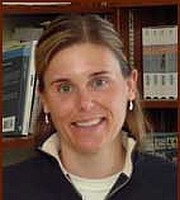Canadian Geographic, Toronto Star: U of M connection to finding the lost Franklin ship
Associate professor Brooke Milne, anthropology, lent a technological hand to the search for the lost Franklin Expedition ship. As Canadian Geographic reports, Milne lent some advanced technology to the search — ground-based LiDAR. (The Toronto Star reports on it here.)
LiDAR (short for light detection and ranging) is a more recent remote-sensing technology that can measure the distances and shape of a target surface over a larger area.
For more, read the short article here.
The advanced technology Prof. Milne loaned was funded through her Canadian Foundation for Innovation, Manitoba Research Innovation Funds, and Manitoba Heritage Grants.
Professor Milne is an archaeological anthropologist specializing in the analysis of northern latitude stone tool-using hunter-gatherer cultures. Her field of expertise is lithic (i.e. stone) technology, with a special focus on debitage (i.e. stone waste flakes). Milne’s theoretical interests include technological organization and mobility, skill acquisition, social organization, enculturation, and landscape learning. Her current research integrates geochemical provenance techniques to characterize lithic source areas on southern Baffin Island. Using these sourcing data as proxies for human behaviour, Milne and her co-investigators are reconstructing ancient seasonal land use patterns among the Palaeo-Eskimo populations that lived in this region. Milne’s future research, with partnerships through the University of Waterloo and Government of Nunavut, aims to investigate the impacts of climate change on frozen archaeological deposits in Nunavut using non-invasive geophysical surveying instrumentation and 3D laser topographic scanning technology.







